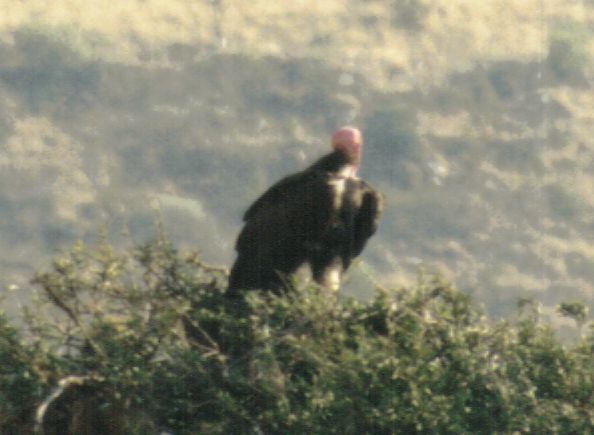|
| Query: Black back | Result: 310th of 1142 | |
(P:\Africa\Bird) Dn-a0142.jpg (African White-backed Vulture)
| Subject: | (P:\Africa\Bird) Dn-a0142.jpg (African White-backed Vulture)
| | Poster: | Darren New (dnew@san.rr.com)
| |

| File size : 36076 bytes
File date : 2001:01:30 14:46:31
Resolution: 594x435
Jpeg process : Baseline
Posted Newsgroups: alt.binaries.pictures.animals
Posted Date: Thu, 25 Jan 2001 19:13:44 GMT |
African White-backed Vulture, Gyps africanus, is an Old World vulture in the family Accipitridae. It is widespread throughout sub-Saharan Africa. The adult African White-backed Vulture is mostly black about the head and neck, with a sparse covering of yellowish down, and a sparse white ruff. It is brown over the shoulders and to the joint of the wing. Primary flight feathers are black, secondaries dark brown. The tail is also black. Most of the underparts are fulvous, except for white under-wings and a brown crop patch. The back and rump are white. |
^o^
Animal Pictures Archive for smart phones
^o^
|
|

